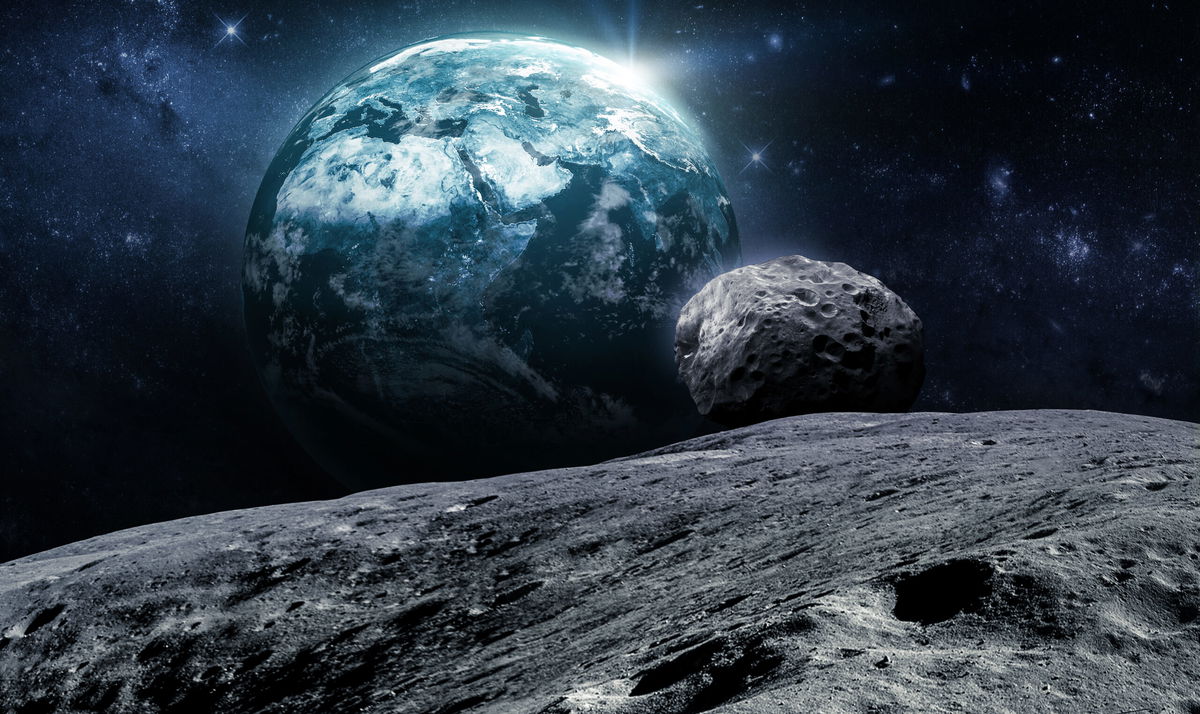Objects like 2025 PN7 give scientists an opportunity to test theories about orbital mechanics. Photo credit: Dima Zel/Shutterstock
Astronomers have announced that Earth has acquired a new space companion, a small asteroid named 2025 PN7. This asteroid will accompany our planet for the next half century.
Some people nickname it mini moonit’s not a true satellite like our moon. Instead, 2025 PN7 is what scientists call it. quasi moon, A rocky celestial body that orbits the Sun in an orbit very close to Earth’s own orbit.
The asteroid, about 19 meters in diameter, was first discovered by astronomers using a telescope in Hawaii in August of this year. Early observations suggest that it may have been moving close to Earth’s orbit for decades, unnoticed due to its small size and faint glow. Astronomers now believe the planet will remain close to Earth until around 2083, after which it will slowly drift deeper into space.
What is quasi-moon?
Difference between co-orbit with the moon
The quasi-moon is a rare celestial body that appears to orbit around the Earth, but actually orbits around the sun. Its orbital period is almost the same as that of our planet. So, just as the Earth orbits around the Sun for a year, so do asteroids. From our vantage point, the object appears to be following us, gracefully looping back and forth in a slow, repeating pattern.
Unlike gravity, which holds the natural moon firmly in place, the quasi-moon remains independent and is gently influenced by Earth’s gravity, but never completely captured by Earth’s gravity. This fragile balance can last for decades or even centuries before the object eventually drifts away.
Previous transient companions, such as Kamo’oalewa and 2023 FW13, exhibited similar behavior, but none stayed as long as 2025 PN7 was expected.
Harmless but attractive visitor
No threat – just an orbital dance
Scientists stress that PN7 in 2025 poses no threat to Earth. It will never get close enough to enter the atmosphere or collide with Earth. In fact, it lies millions of kilometers away, far beyond the moon’s orbit.
For astronomers, its arrival is not a cause for concern, but rather a welcome opportunity. Observing 2025 PN7 will help researchers understand how small asteroids interact with the planet’s gravitational field and how they can maintain a stable co-orbital relationship over long periods of time. Such discoveries also provide insight into the early solar system, where similar gravitational dances between young planets and small objects were common.
Why scientists are excited
natural laboratory of the universe
Objects like 2025 PN7 give scientists the opportunity to test theories about orbital mechanics, the effects of solar radiation, and long-term asteroid motion. Because these quasi-satellites share Earth’s orbital speed, they are also considered ideal potential targets for future space missions.
Their proximity means spacecraft can reach them with relatively little energy expenditure. Studying them up close may reveal important information about the composition of near-Earth asteroids and their relationship to the material that built our planet billions of years ago. The researchers also hope to use radar and optical tracking to map the asteroid’s orbit in detail to improve predictions about other ephemeral satellites that may appear in the future.
summary
- 2025 PN7 is newly identified Quasi-moon It travels around the sun along with the earth.
- It is approximately 19 meters wide and will remain nearby until 2083.
- This asteroid is harmless and located millions of kilometers from Earth.
- Scientists see this as a valuable research opportunity to understand asteroid behavior.
- This discovery shows that the vicinity of Earth’s orbit is dynamic and constantly changing.
travel the solar system together
PN7 in 2025 will never rival the Moon in brightness or influence, but its silent presence is a reminder that Earth’s orbit is never empty. Every year, small asteroids approach us, some staying for months and others, like this one, for generations. For the next 60 years, this tiny moon will travel with us through space, moving to Earth’s rhythms and eventually disappearing.
It is a humbling reminder that even in the vast stillness of the universe, we are not alone on our journey around the sun, but are always accompanied, however briefly, by silent travelers we have never met.








